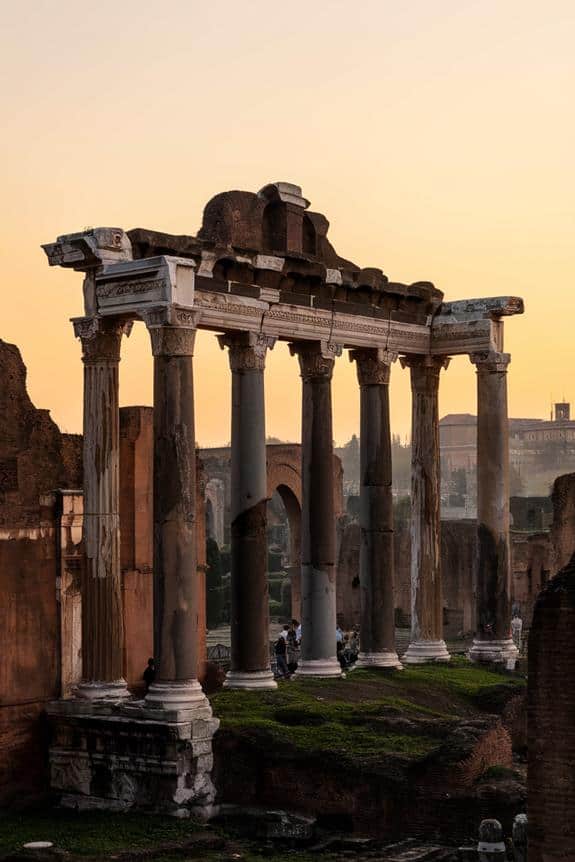
5 Must-Visit Cities for History-Obsessed Travelers
For history-obsessed travelers, these five cities offer unparalleled experiences: Rome, with its ancient ruins and Renaissance masterpieces; Athens, showcasing the birthplace of democracy and iconic Acropolis; Cairo, home to the pyramids and treasures of ancient Egypt; Istanbul, bridging East and West with architectural marvels like Hagia Sophia; and Kyoto, Japan's former imperial capital, boasting 17 UNESCO World Heritage Sites. Each destination provides a unique window into different eras and civilizations, from gladiatorial arenas to pharaohs' tombs, from Ottoman palaces to Zen gardens. You'll walk in the footsteps of emperors, philosophers, and artisans while exploring these living museums. The following details will transport you through millennia of human achievement.
Key Takeaways
- Rome offers over 2,500 years of history with ancient ruins, Renaissance masterpieces, and iconic sites like the Colosseum.
- Athens showcases the birthplace of democracy with the Acropolis, Parthenon, and Ancient Agora.
- Cairo presents the Giza Pyramid Complex, Egyptian Museum, and millennia of history from ancient Egypt to Islamic culture.
- Istanbul bridges East and West, featuring architectural marvels like Hagia Sophia and the Blue Mosque.
- Kyoto boasts 17 UNESCO World Heritage Sites, traditional districts, and numerous Buddhist temples and Shinto shrines.
Rome: Eternal City of Antiquity
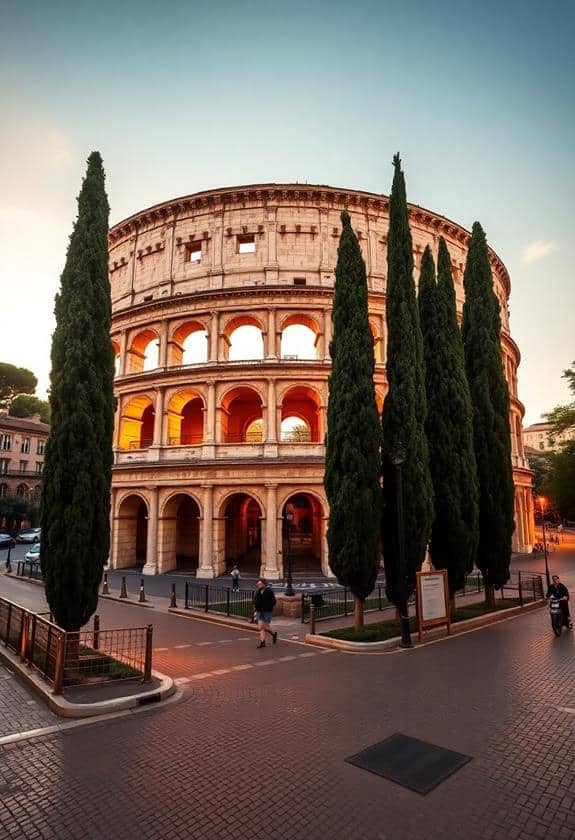
In the heart of Italy lies Rome, a city steeped in over 2,500 years of history. As you explore the Eternal City, you'll encounter an unparalleled concentration of ancient ruins, Renaissance masterpieces, and Baroque splendor. The Colosseum, a 1st-century amphitheater that once hosted gladiatorial contests, stands as a monument to Roman engineering prowess. Nearby, the Roman Forum's sprawling complex of temples and government buildings offers insight into daily life in ancient times. Don't miss the Pantheon, a remarkably well-preserved 2nd-century temple featuring the world's largest unreinforced concrete dome. For a glimpse into Rome's Christian heritage, visit Vatican City, home to St. Peter's Basilica and the Sistine Chapel. To capture the city's timeless beauty, consider bringing a compact travel camera with versatile shooting modes and creative filters for customizing your images. As you navigate Rome's narrow cobblestone streets, you'll find history etched into every corner, from ancient aqueducts to ornate fountains and grand palazzos.
Athens: Birthplace of Democracy
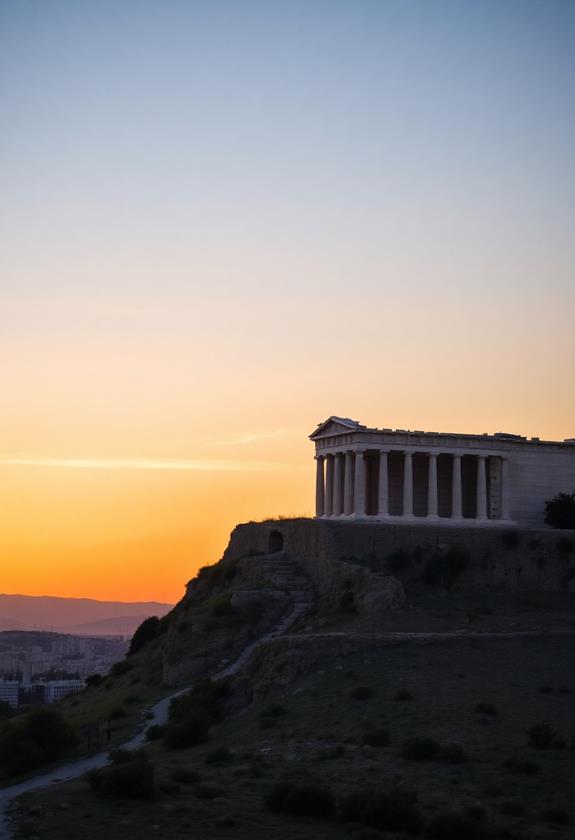
Atop the sun-drenched hills of Greece, Athens stands as a monument to the birth of Western civilization. As you explore this ancient metropolis, you'll encounter the Acropolis, a citadel perched on a rocky outcrop, housing the iconic Parthenon. This temple, dedicated to Athena, showcases the pinnacle of classical Greek architecture. Don't miss the Ancient Agora, once the heart of Athenian democracy, where philosophers like Socrates debated ideas that shape our world today. For history enthusiasts keen to capture their journey, compact travel cameras offer the perfect balance of portability and image quality to document your explorations. The nearby Pnyx Hill, where citizens gathered to vote, offers a tangible connection to the roots of democratic governance. For a detailed overview of Greek history, visit the National Archaeological Museum, home to an extensive collection of artifacts spanning millennia. Athens' blend of ancient ruins and modern urban life provides an unparalleled journey through time for history enthusiasts.
Cairo: Land of Pharaohs
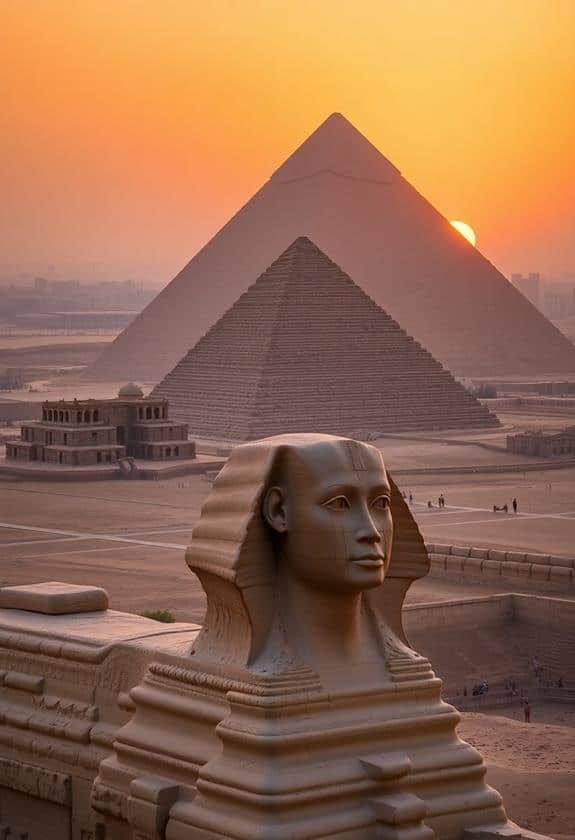
Few cities evoke the mystique of ancient civilizations like Cairo. As you explore Egypt's capital, you'll find yourself immersed in millennia of history. The Giza Pyramid Complex, a stone's throw from the city center, stands as an enduring monument to the ingenuity of the ancient Egyptians. Don't miss the Egyptian Museum, home to an unparalleled collection of artifacts, including Tutankhamun's golden mask. For a glimpse into Islamic Cairo, visit the Citadel of Saladin and the Muhammad Ali Mosque. Travel guides can provide invaluable insights into the city's rich historical tapestry, helping you navigate its countless wonders more effectively. The bustling Khan el-Khalili bazaar offers a sensory journey through time, with its narrow alleys and traditional crafts. To fully appreciate Cairo's layered history, consider hiring a knowledgeable guide who can provide context and insights into the city's archaeological treasures and architectural marvels.
Istanbul: Bridge Between Continents
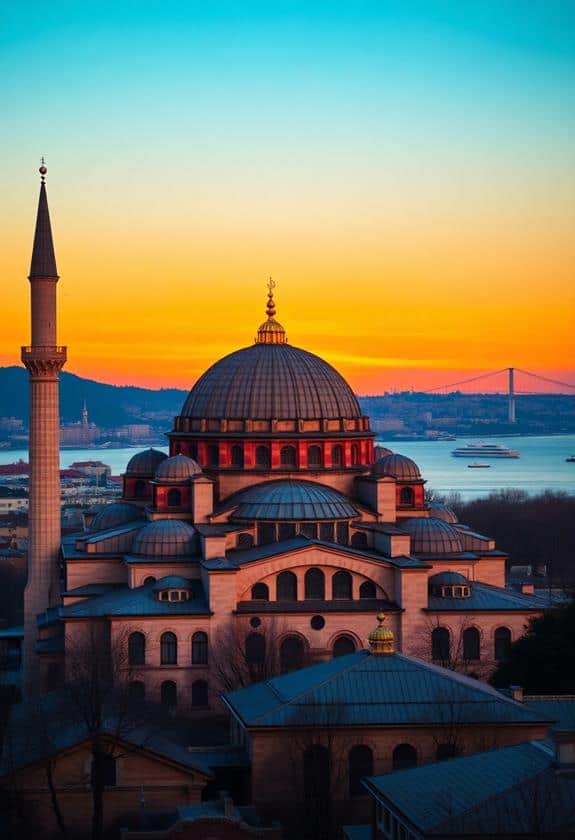
Straddling two continents, Istanbul offers history buffs a unique blend of East and West. You'll find yourself immersed in a city that's been the capital of three empires: Roman, Byzantine, and Ottoman. Start your journey at the iconic Hagia Sophia, a architectural marvel that's served as both a cathedral and a mosque. Then, explore the opulent Topkapi Palace, home to Ottoman sultans for centuries. Don't miss the Blue Mosque, with its stunning blue Iznik tiles and six minarets. For a taste of Byzantine history, visit the underground Basilica Cistern, a vast subterranean water reservoir. Take a stroll across the Galata Bridge, connecting the old city to the more modern districts. Istanbul's Grand Bazaar, one of the world's oldest covered markets, offers a glimpse into the city's rich trading past. When exploring Istanbul's historic sites, be prepared for unpredictable weather by carrying a compact travel umbrella that can easily fit in your backpack or coat pocket.
Kyoto: Ancient Japanese Capital
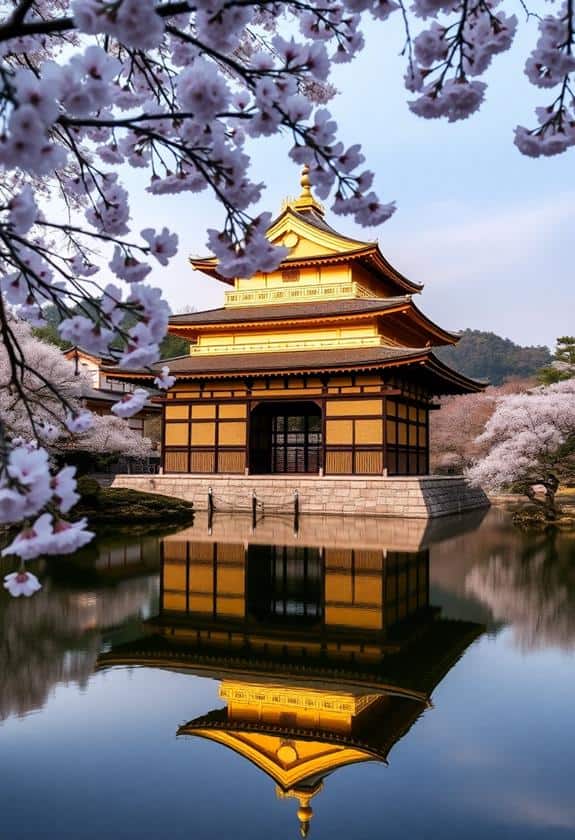
As you step into Kyoto, you're transported back in time to Japan's imperial past. This ancient capital, which served as the emperor's residence for over a millennium, boasts an unparalleled concentration of historical sites. You'll find 17 UNESCO World Heritage Sites, including the iconic Kinkaku-ji (Golden Pavilion) and the sprawling Nijo Castle. The city's traditional architecture is on full display in the Gion district, where you might spot geishas hurrying to their appointments. For those seeking to explore deeper into Kyoto's rich history, travel guides can provide invaluable insights and hidden gems to uncover. Don't miss the opportunity to explore Kyoto's numerous Buddhist temples and Shinto shrines, such as the serene Ryoan-ji with its famous rock garden. For a truly immersive experience, consider staying in a ryokan, a traditional Japanese inn, where you can partake in tea ceremonies and enjoy kaiseki cuisine, showcasing the refined culinary arts of ancient Japan.
Frequently Asked Questions
What's the Best Time of Year to Visit These Historical Cities?
The best time to visit historical cities depends on your preferences and the specific locations you're exploring. Generally, you'll find milder weather and fewer crowds during shoulder seasons (spring and fall). Summer offers longer daylight hours but can be hot and crowded. Winter may provide unique charm, especially during holiday seasons, but some attractions might have limited hours. Consider each city's climate, festivals, and peak tourist periods when planning your trip. Always check local events calendars to enhance your historical experience.
Are Guided Tours Worth It for Exploring These Ancient Sites?
While the early bird catches the worm, guided tours can be your golden ticket to revealing ancient sites' secrets. You'll benefit from expert knowledge, skip-the-line access, and curated experiences. Tours often provide insights you'd miss exploring solo, delving into hidden stories and architectural details. However, they can limit your freedom to linger or explore off-the-beaten-path areas. Consider a mix of guided tours and independent exploration for a well-rounded historical adventure.
How Long Should I Spend in Each City to Fully Experience It?
The ideal duration for fully experiencing a city varies based on its size, attractions, and your personal interests. Generally, you'll want to allocate 3-5 days for a medium-sized city and 5-7 days for larger metropolises. This allows time to explore major landmarks, museums, and cultural sites, while also immersing yourself in local neighborhoods and cuisine. Consider factors like seasonal events, nearby day trips, and your travel pace when planning. Ultimately, you'll need to balance thoroughness with your overall itinerary constraints.
What Are the Local Customs and Etiquette I Should Be Aware Of?
When visiting new places, you should be aware of local customs and etiquette to show respect and avoid offense. Research dress codes, particularly for religious sites. Learn basic greetings and polite phrases in the local language. Observe dining etiquette, such as using utensils properly or eating with your right hand in some cultures. Be mindful of public behavior, including appropriate physical contact and gestures. Respect local traditions, holidays, and religious practices. Always ask permission before taking photos of people or sacred sites.
Are There Any Lesser-Known Historical Sites in These Cities Worth Visiting?
While you might think you've seen it all in these historic cities, there's always more to uncover. You'll find lesser-known gems hidden in plain sight, often overshadowed by their famous counterparts. Explore underground catacombs, forgotten ruins, or obscure museums that house unique artifacts. These off-the-beaten-path sites offer a deeper, more intimate look at the city's history. Research local historical societies or specialized tour guides to discover these hidden treasures, which can provide a richer, more authentic experience.
